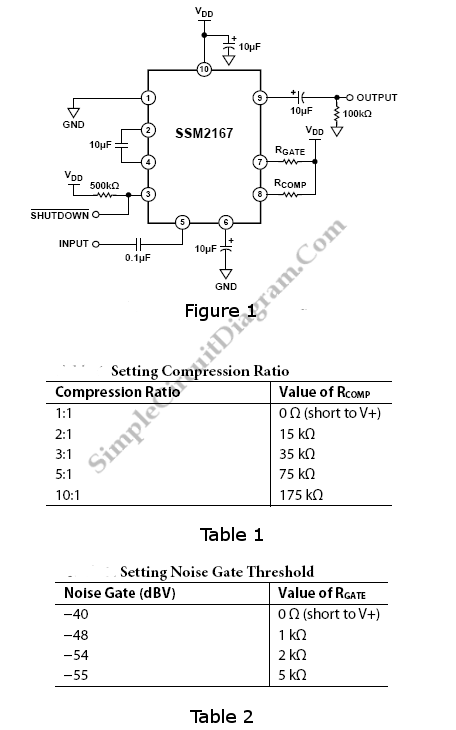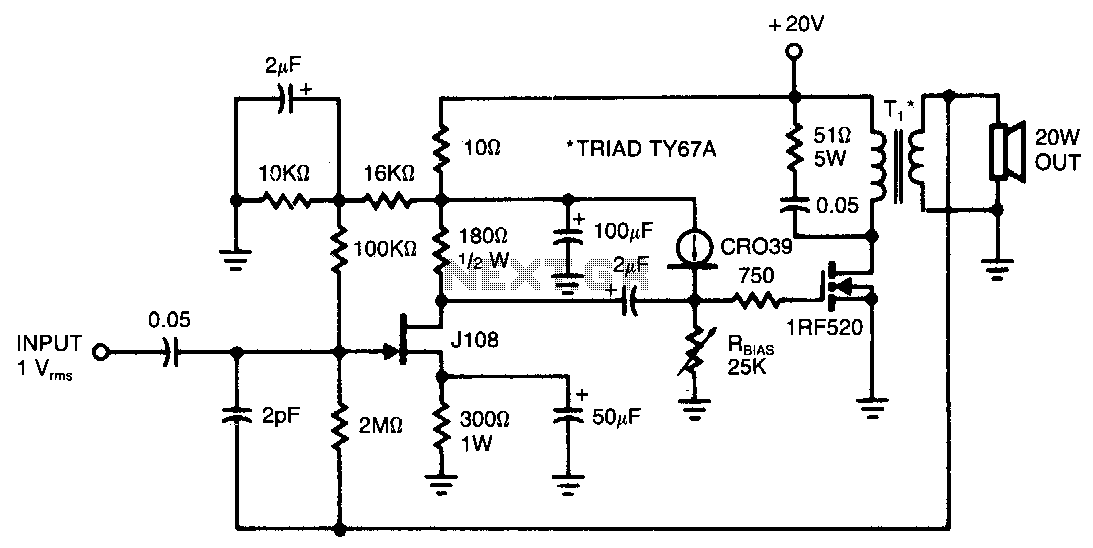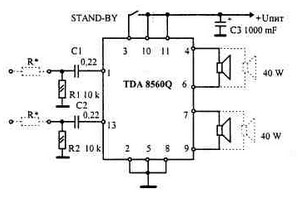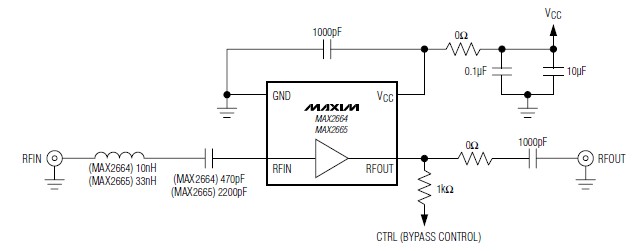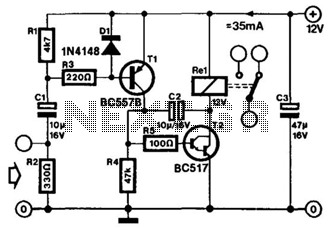
Audio Amplifier Volume Indicator
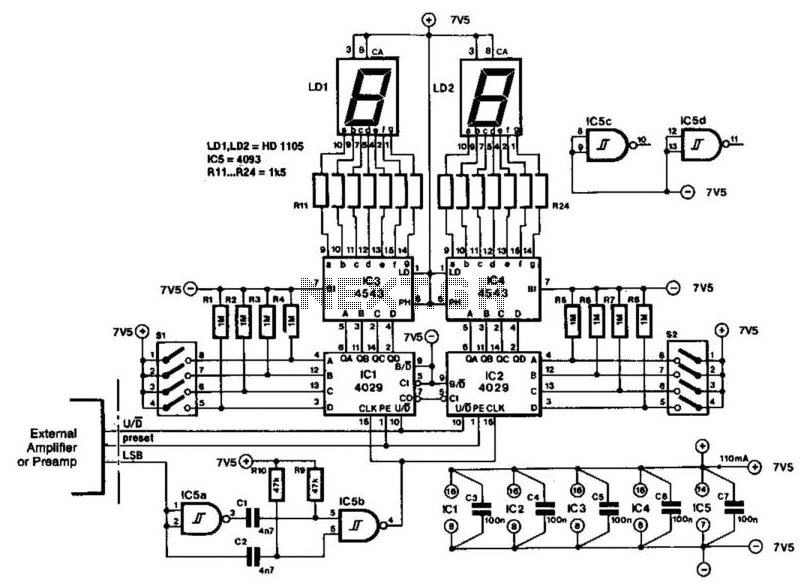
The indicator is designed for use with an audio amplifier or preamplifier, but it can also be utilized in other applications requiring rapid counting of steps or changes. To avoid interference with the audio signal, the circuit operates in a static mode. Consequently, if the volume control remains unchanged, the circuit remains inactive. An external clock signal is unnecessary as it is derived from variations in the least significant bit (LSB). This is accomplished through two differentiating networks: R9/C1 and R10/C2, which effectively double the frequency of the available LSB signal. Additionally, to ensure synchronization between the counters of the indicator and the volume control, "up/down" and "preset" signals from the preamplifier are employed. Although it may seem excessive to link the state of the counters in the preamplifier with those in the indicator, this approach minimizes the connections between the two units. Furthermore, the present counters operate in 8-bit BCD format, in contrast to the 6-bit binary format utilized by the volume control in the preamplifier. Displaying the state of the volume control requires only a couple of BCD-to-7-segment decoders and 7-segment displays. The preset in the indicator must be configured in BCD code, with leading zeros displayed, allowing numbers from 0 to 9 to be shown. The DIP switches and resistors R1 through R8 in the schematic can be omitted if a single fixed preset is expected to be used, with the resistors replaced by jump leads.
The described circuit functions as a volume indicator for audio systems, employing a static design to prevent audio interference. The use of differentiating networks R9/C1 and R10/C2 serves a critical role in converting LSB changes into a usable clock signal, effectively doubling the frequency to enhance responsiveness. This ensures that the indicator can rapidly reflect changes in volume without introducing noise into the audio path.
The integration of "up/down" and "preset" signals from the preamplifier allows for a seamless interaction between the indicator and the audio control system. This design choice optimizes the circuit layout by reducing the number of connections, which can improve reliability and reduce potential points of failure.
The choice of using 8-bit BCD for the present counters, as opposed to the 6-bit binary format from the volume control, allows for a more straightforward display of the volume level. The BCD-to-7-segment decoders convert the binary-coded decimal into a format suitable for visual representation on 7-segment displays, providing clear and immediate feedback to the user.
The requirement for the preset to be in BCD code ensures that the system can accommodate a range of volume settings, and the display of leading zeros allows for a consistent visual format, enhancing user experience. The option to replace DIP switches and resistors with jump leads simplifies the design for applications where a single preset is sufficient, further streamlining the circuit.
Overall, this circuit design exemplifies an effective solution for integrating visual indicators into audio systems, balancing functionality with simplicity while ensuring high performance in tracking volume changes. The indicator is intended for use with an audio amplifier or preamplifier, but it can also be used in othe r applications where a number of steps or changes must be counted rapidly. To prevent interference with the audio signal, the circuit is a static design. Thus, if the volume control is not adjusted, the circuit does nothing. The circuit does not need an external clock signal, because this is derived from any changes in the least significant bit (LSB). This is done by two differentiating networks: R9/C1 and R10/C2, which double the frequency of an available LSB signal.
Moreover, to ensure that the counters of the indicator remain in step with the volume control, signals "up/down" and "preset" from the preamplifier are used. It might seem rather extravagant to couple the state of the counters in the preamplifier with that of the present counters, but it is a good way to keep the connections between the two units to a minimum.
Furthermore, the present counters operate in 8-bit BCD, instead of 6-bit binary as used by those in the volume control (in the preamplifier). All that is required to display the state of the volume control are a couple of BCD-to-7-segment decoders and 7-segment displays.
The preset in the indicator must be set in BCD code. Leading zeros are not suppressed so numbers up to and including 9 are displayed, starting with a 0. The DIP switches and resistors Rl through R8 in the diagram can be omitted if only one fixed preset is likely to be used. The resistors should be replaced by jump leads.
The described circuit functions as a volume indicator for audio systems, employing a static design to prevent audio interference. The use of differentiating networks R9/C1 and R10/C2 serves a critical role in converting LSB changes into a usable clock signal, effectively doubling the frequency to enhance responsiveness. This ensures that the indicator can rapidly reflect changes in volume without introducing noise into the audio path.
The integration of "up/down" and "preset" signals from the preamplifier allows for a seamless interaction between the indicator and the audio control system. This design choice optimizes the circuit layout by reducing the number of connections, which can improve reliability and reduce potential points of failure.
The choice of using 8-bit BCD for the present counters, as opposed to the 6-bit binary format from the volume control, allows for a more straightforward display of the volume level. The BCD-to-7-segment decoders convert the binary-coded decimal into a format suitable for visual representation on 7-segment displays, providing clear and immediate feedback to the user.
The requirement for the preset to be in BCD code ensures that the system can accommodate a range of volume settings, and the display of leading zeros allows for a consistent visual format, enhancing user experience. The option to replace DIP switches and resistors with jump leads simplifies the design for applications where a single preset is sufficient, further streamlining the circuit.
Overall, this circuit design exemplifies an effective solution for integrating visual indicators into audio systems, balancing functionality with simplicity while ensuring high performance in tracking volume changes. The indicator is intended for use with an audio amplifier or preamplifier, but it can also be used in othe r applications where a number of steps or changes must be counted rapidly. To prevent interference with the audio signal, the circuit is a static design. Thus, if the volume control is not adjusted, the circuit does nothing. The circuit does not need an external clock signal, because this is derived from any changes in the least significant bit (LSB). This is done by two differentiating networks: R9/C1 and R10/C2, which double the frequency of an available LSB signal.
Moreover, to ensure that the counters of the indicator remain in step with the volume control, signals "up/down" and "preset" from the preamplifier are used. It might seem rather extravagant to couple the state of the counters in the preamplifier with that of the present counters, but it is a good way to keep the connections between the two units to a minimum.
Furthermore, the present counters operate in 8-bit BCD, instead of 6-bit binary as used by those in the volume control (in the preamplifier). All that is required to display the state of the volume control are a couple of BCD-to-7-segment decoders and 7-segment displays.
The preset in the indicator must be set in BCD code. Leading zeros are not suppressed so numbers up to and including 9 are displayed, starting with a 0. The DIP switches and resistors Rl through R8 in the diagram can be omitted if only one fixed preset is likely to be used. The resistors should be replaced by jump leads.

